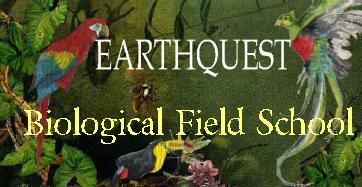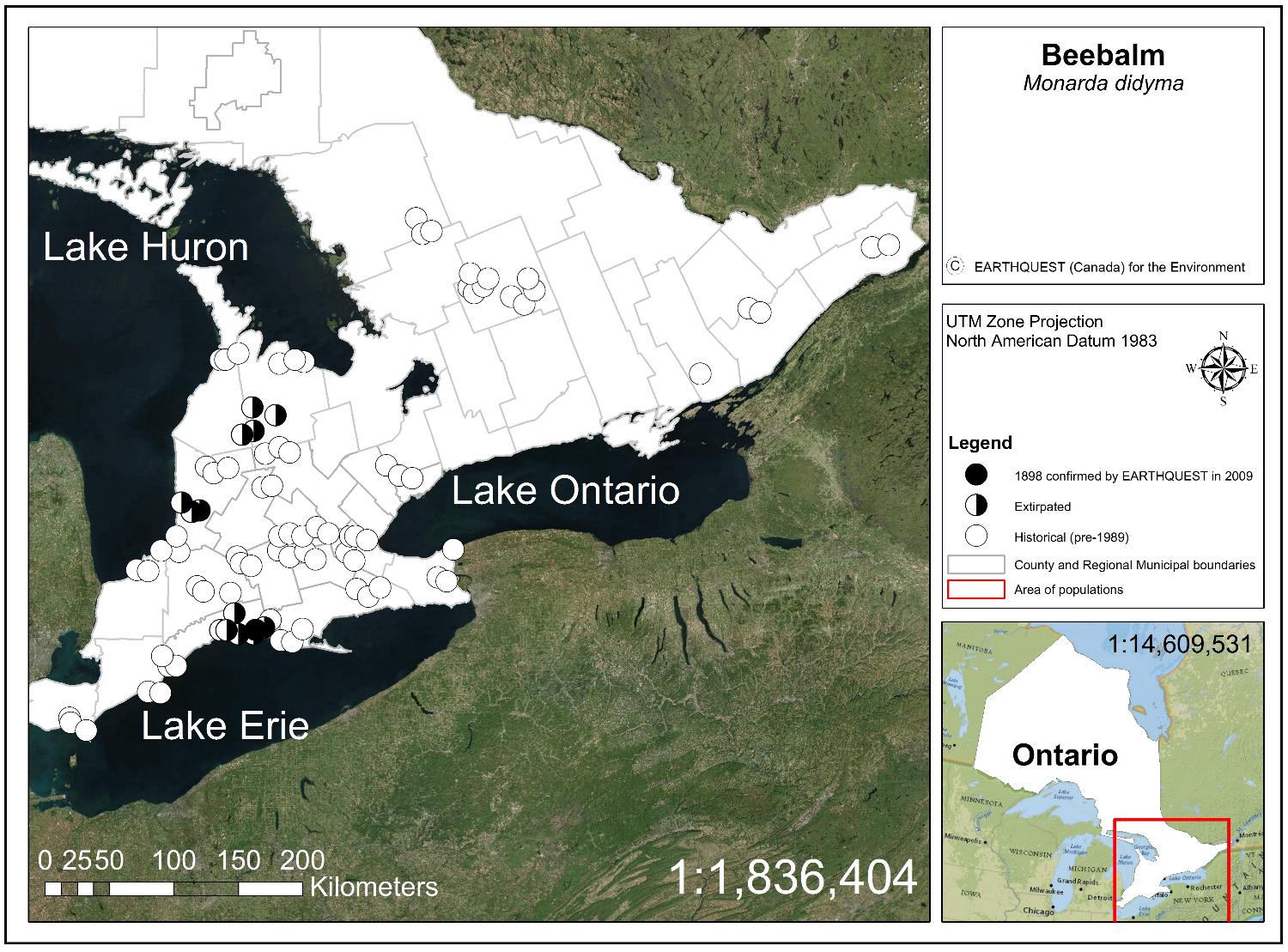
Summer | ||||||
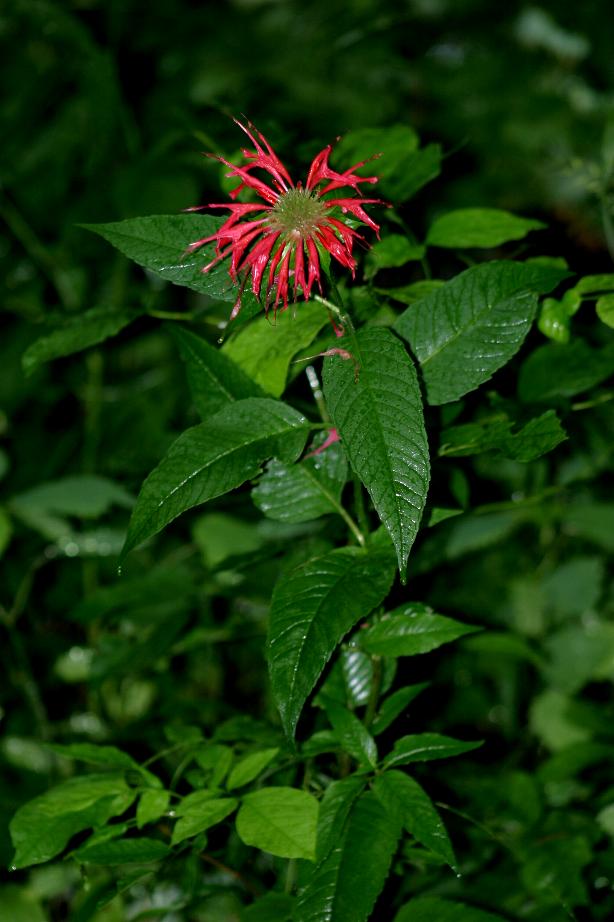 |
Bottom leaf
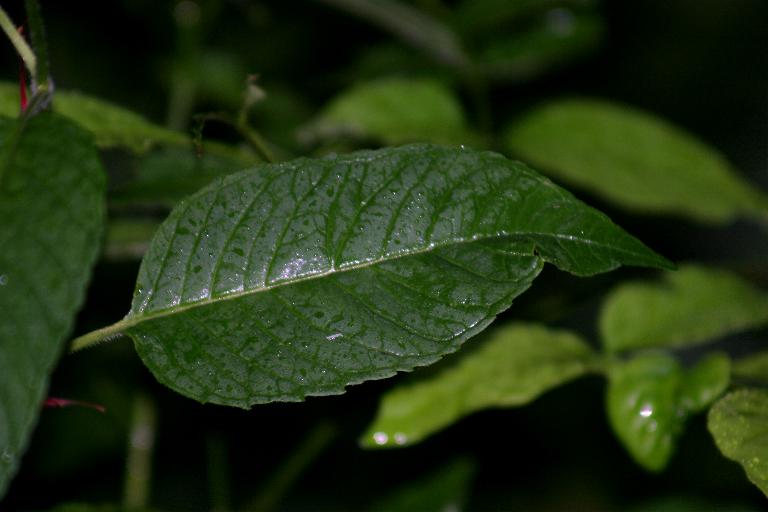 Middle leaves
| 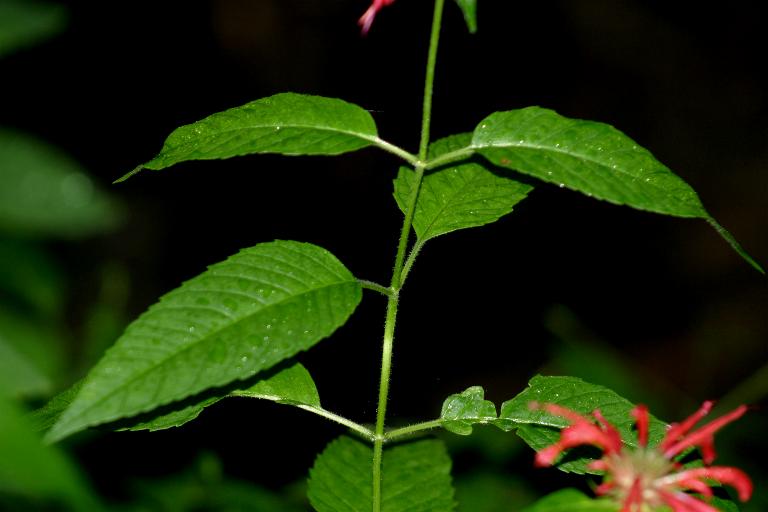 Photo: Dave Jolly Upper leaf
| 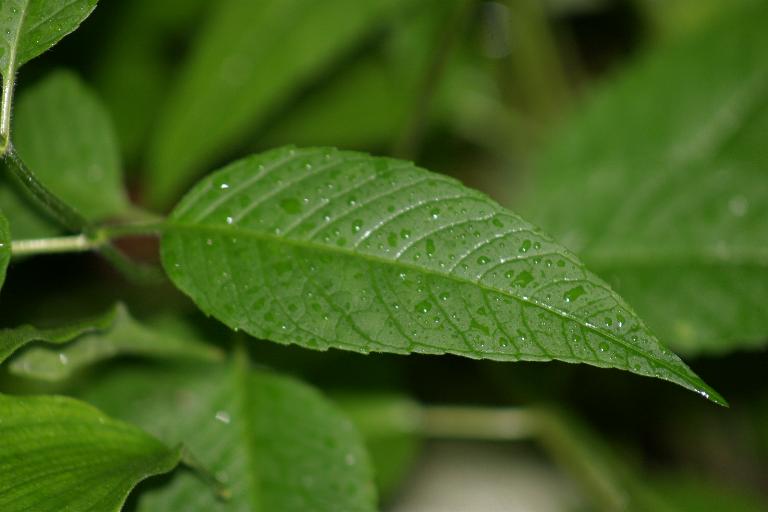 Photo: Dave Jolly Flower
|
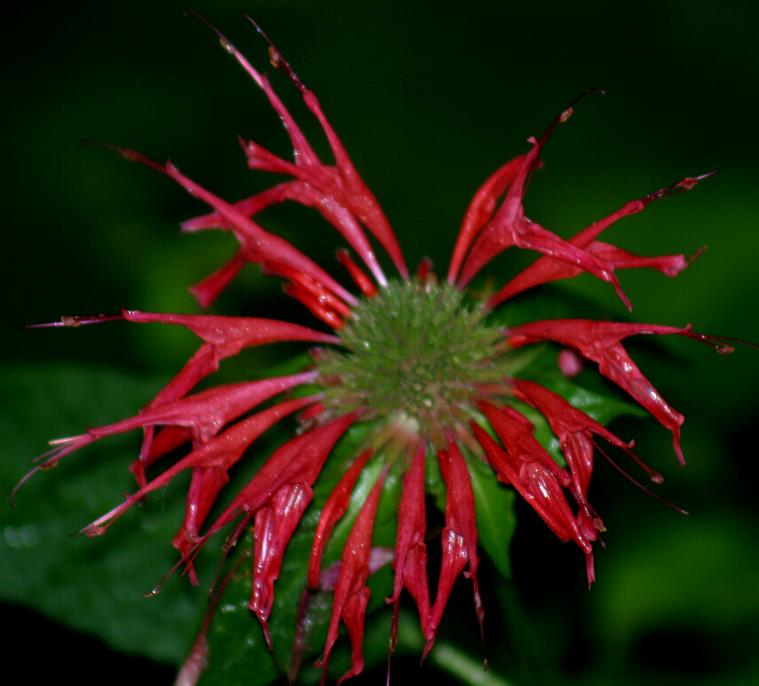 Photo: Dave Jolly
Flowering period: Most plants emerge first week of May, flowering from July 15th August 16th (EARTHQUEST 2015, Jolly 2018).
5 Second Rule Identification: Family traits: A perennial wildflower with a square stem, oppositely arranged eaves with bright red, or scarlet flowers.
Biology and Ecology: A detailed account will be provided at a later date.
Insect Pollinators:: Data is insufficient at this time.
Population Size: A population size of Scarlet Beebalm in Ontario is unknown at this time. Future EARTHQUEST publications may reveal a closer approximation to the actual number of stems in the province. Twenty two records compiled between 2006 and 2012 exist in the EARTHQUEST master plants of Ontario database. Approximately 32 sites with extant, historical and extirpated populations occur in the Natural Heritage Information Centre (NHIC) database. Thirty NHIC Element Occurrences exist between 1888 and 1985.
Habitat & Soils: This mint prefers moist woods, swampy thickets along riverbanks, streams and creeks, and roadsides. Detailed Ecological Land Classification vegetation characteristics are lacking for Ontario populations. One population in Elgin county was found growing in Fresh – Moist Sugar Maple – Lowland Ash Deciduous Forest Type (FODM6-1) (Jolly 2015).
Threats: The greatest threat is invasive species, recreational and ATV use, and flooding. One population within a Conservation Authority regulation limit had 81 stems in 2009. Subsequent visits resulted in not finding the plants. It was presumed flooding killed all plants.
Recovery: Since this is a provincially designated species of conservation concern no environmental legislation protects the species, or it's habitat.
Biometrics: Individuals ranging in size from 90 - 120 cm in height. Stem is square, distinctive of mint species. Leaves are oppositely arranged: bottom leaf; 4.8 cm wide by 13.4 cm long, middle leaf; 2.4 cm wide by 12 cm long, upper leaf; 1.5 cm wide by 5.4 cm long.
Environmental Protection: This species receives no provincial or federal protection.
Confusing look-a-likes: This species closely resembles Wild Bergamot (Monarda fistulosa), except the flower color is red, not light purple. Leaves and stem on M. fistulosa may also be pubescent, whereas in M. didyma they are glabrous.
References:
Distribution: To date, current, historical and extirpated populations have been found in 16 counties and regional municipalities; Brant, Chatham-Kent, Elgin, Essex, Frontenac, Haldimand, Haliburton, Huron, Lambton, Leeds and Grenville, Middlesex, Norfolk, Oxford, Parry Sound, Toronto, York region. The largest population is found primarily in Elgin county within Ecodistrict 7E-2.
$150 CAD + shipping and handling Photo: Dave Jolly for more information please click on; Ontario SAR & Rare Plants book
Senior Instructor/Ecologist/Consultant & President D. Jolly, B.Sc.
| ||
 EARTHQUEST (Canada) for the Environment
EARTHQUEST (Canada) for the Environment
